2017 sees Liv bring two new women’s bikes to the market: the 120mm aggressive XC Pique, and the 160mm enduro Hail. Both bikes are brand new and engineered from the ground-up specifically for women. Part of Liv’s design ethos was to make the front end easier to pop without needing as much upper body strength, and for them to put women in a position which balances them and keeps the front end under control when climbing and descending.
To investigate Liv’s design ethos, Hannah travelled to Sedona in Arizona to test out the new 2017 Pique and Hail mountain bikes. Here she takes us through the 120mm XC ripper, called the Pique.
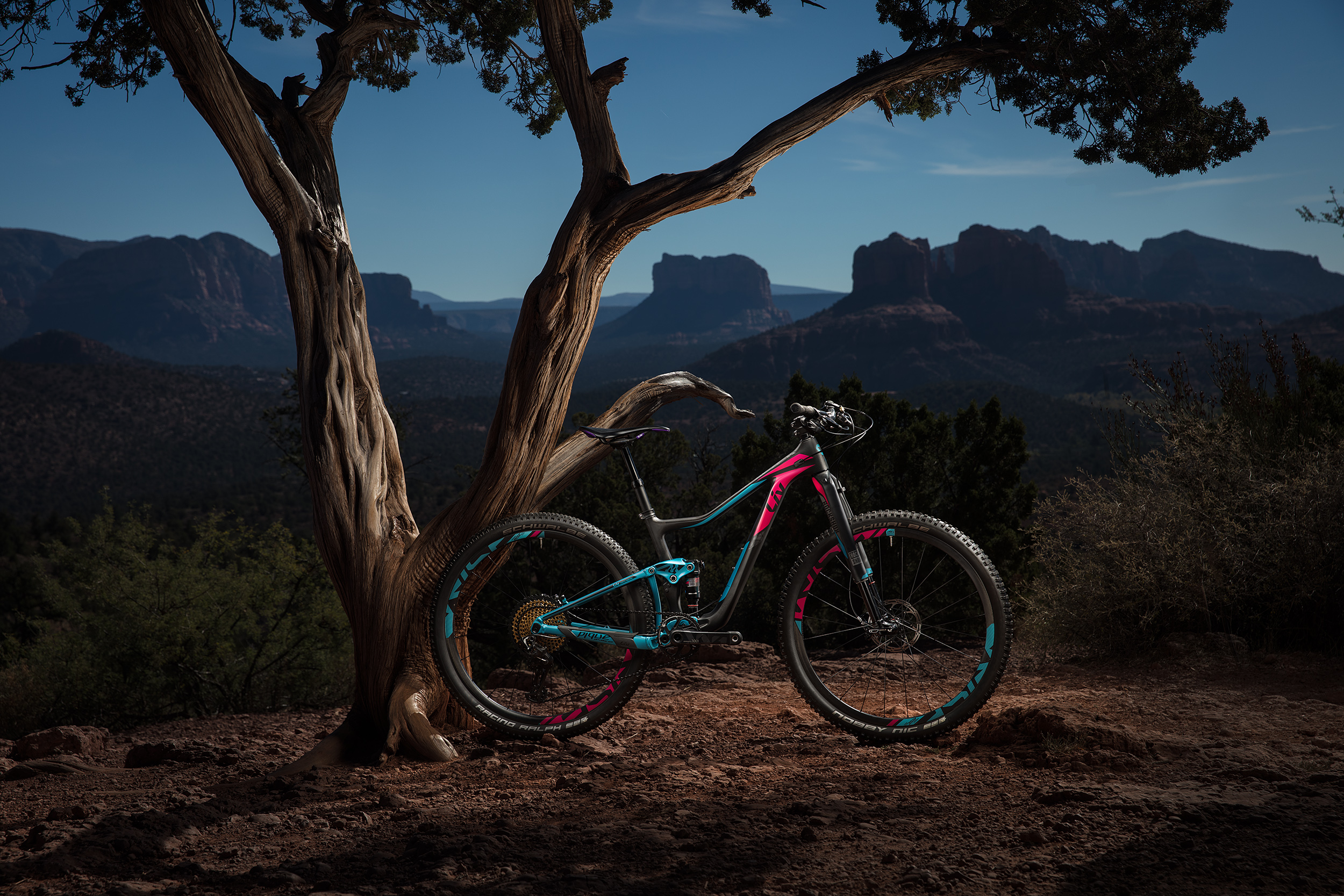
It is Liv’s belief that women’s bodies are different enough to warrant a women’s specific approach to bike design, and there are two key differences that have impacted the design of the Pique. Firstly that women usually have strong lower bodies, with relatively less upper body strength. Along with the strength in the lower body comes a lower centre of gravity – the second feature – with weight in the hips and legs and less in the torso. As such, while the Pique is loosely based on the Giant Anthem, it has been designed from scratch and has a different frame, different geometry and different travel (120mm versus 110mm on the Giant Anthem).
As you may have already gathered, the new Pique replaces the 100mm travel Lust for 2017, with Liv citing market demand for the change-up. That’s an interesting claim given that the Lust has been Liv’s (and Giant’s) best selling mountain bike worldwide, so the company must be confident in the capabilities of its new bike. At its heart, the Pique is a full suspension mountain bike for those that want a stiff and responsive racing machine fit for today’s technical XC courses. Despite its XC pedigree, it’s a 27.5in wheeled bike, but Liv thinks this fits the needs of most riders and the increasingly aggressive XC courses. And don’t forget, it was a 27.5in full sus bike that won in Rio.
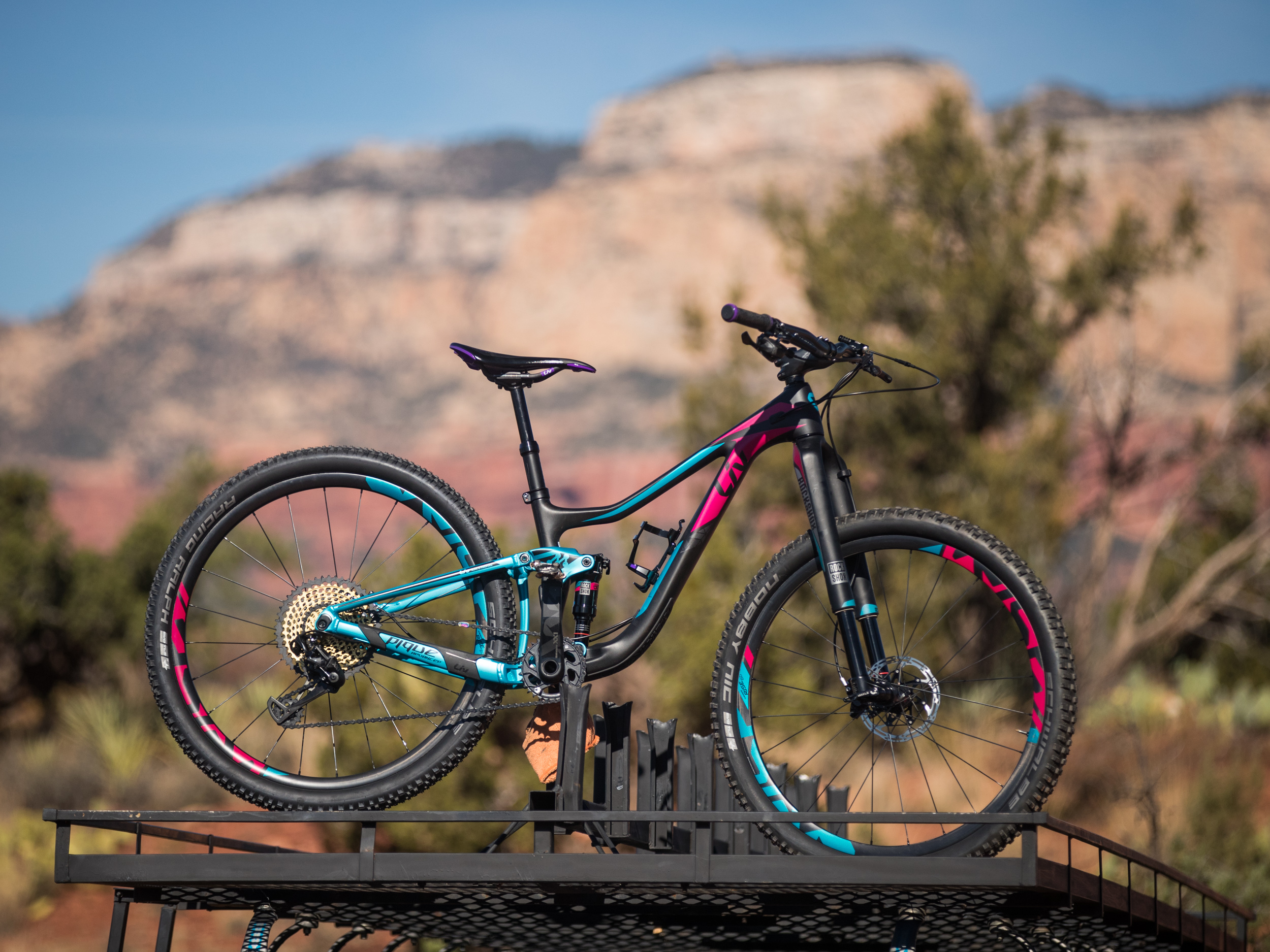
As would be expected of any top flight bike, the Pique Advanced 0 is equipped with top of the range RS-1 forks from Rockshox, and a SRAM Eagle drivetrain. SRAM Ultimate brakes provide stopping power, although these sadly lack the super simple reach adjustment found on the SRAM Guides found on the Hail. That said, it seems that the two carbon Advanced models will not be available in the UK anyway. The two alloy models – the Pique 2 and the Pique 3 are available in the UK, starting at £1,899. In some territories there will also be a Pique SX, with a 140mm front and 120mm rear. The Advanced 0 has a claimed weight of 10.65kg in a size small with tubeless setup.
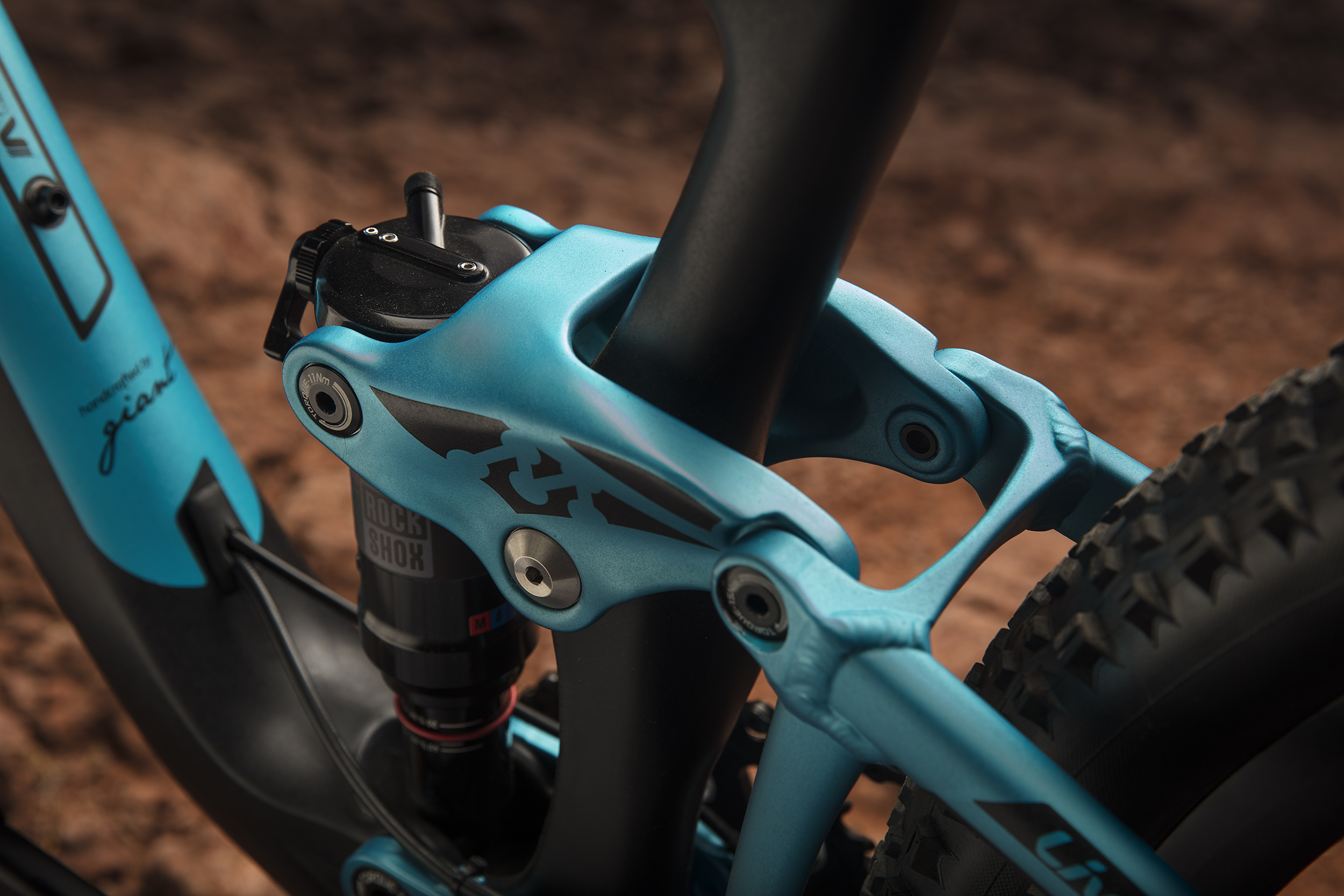
As with the Hail, the Pique uses the Maestro four pivot suspension system with a carbon composite rocker link to deliver a lower centre of gravity and high bottom bracket. I found that this placed the rear shock lever out of easy reach when riding my large size test bike, and I think many riders would find themselves setting the shock and leaving it alone, rather than risking an awkward downwards grab mid-race. That said, in days of old, cyclists managed to race with shifters on their downtubes, so perhaps greater familiarity with the bike after more time spent on it would overcome this awkwardness.
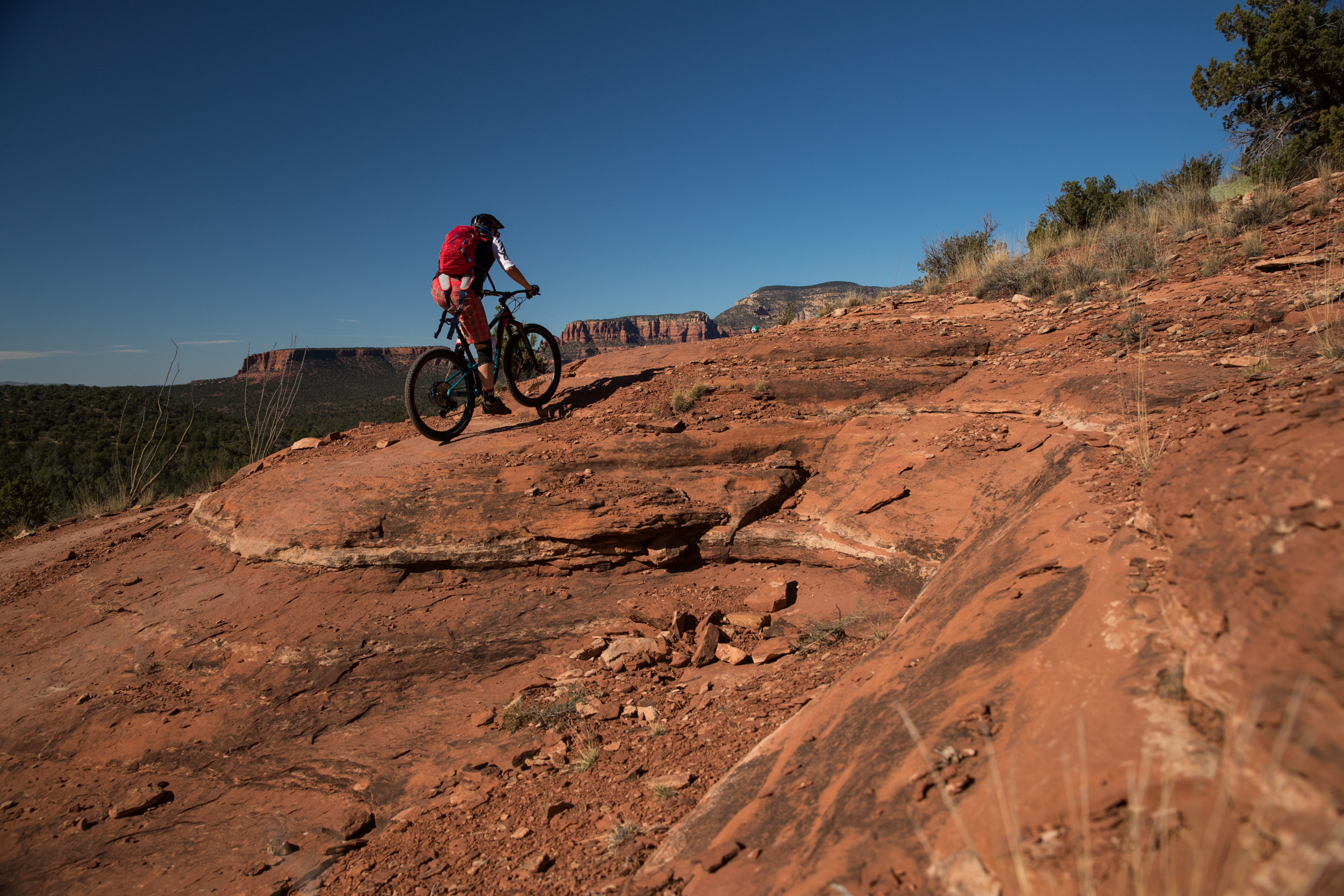
On the dry and dusty trails of Sedona, I found myself struggling for traction on some rocky climbs and, as with the Hail, remounting the saddle – placed high thanks to the tall bottom bracket – proved tricky. However, this was largely down to the skinny and minimally treaded Schwalbe Racing Ralph tyre used on the rear, which was left scratching for grip in sections that the Pique was more than capable of cleaning. We were also running higher than usual tyre pressures in order to avoid pinch-flatting on the slabby rocks lining the Sedona singletrack, and that didn’t help the situation.

I suspect a little more fiddling with tyre pressure and a little more finessing of rock climbing skills would go a long way here, as the bike offers excellent pedal clearance. Its light overall weight and efficient Maestro suspension platform does mean the Pique surges forward under the mere whiff of a pedal stroke, allowing the Pique to make short work of any trail that points up. As the climbs got rougher and rockier though, the Pique became a little harder to control than the Hail. Dropping the stem down a spacer or two would help to get more weight onto the front wheel, but the firm travel of the RS-1 fork on the front of the Pique Advanced 0 proved less likely to track over rocks unless you were attacking every single ledge and step-up. It is a fork designed for racing though, and all of the other Pique models come equipped with Fox 34 forks that will offer better small-bump performance for more predictable front-wheel tracking.
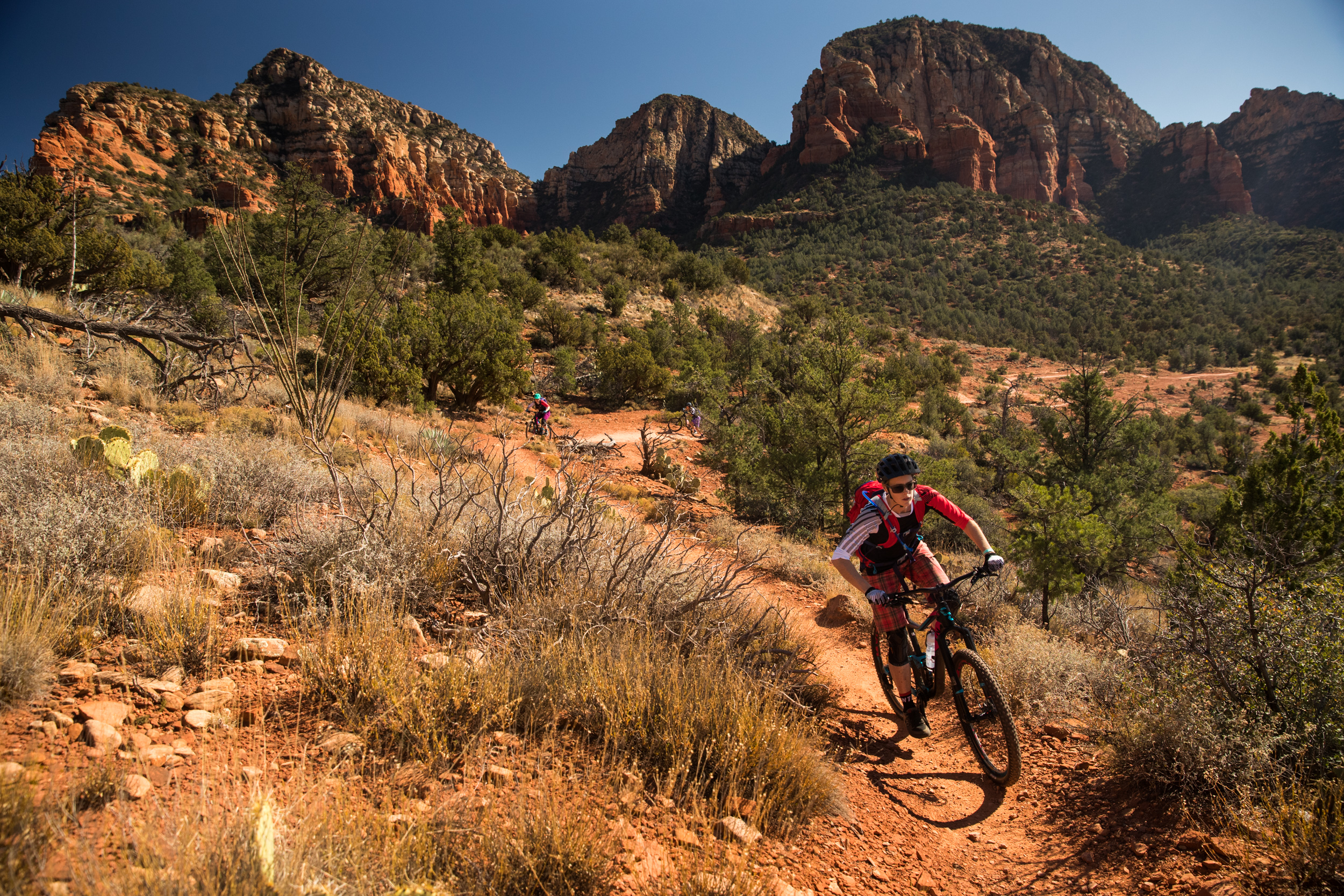
Pedalling the Pique is a joy – there’s a real feeling of transferring power through the bike, and picking and flicking your way through obstacles will have you grinning. Stand up on the pedals and start descending and the fun continues. Pop off rocks and ledges as you go, sneak in and out of gaps between rocks – this bike will go wherever you tell it. The ride is forgiving – although I’d recommend swapping the grips for something a little more cushioned – and I can see the Pique becoming a popular choice among 24 hour racers keen to strike a balance between comfort and performance.

Contrary to my expectations of a bike designed for XC racing, I didn’t feel perched or precarious on the bike, and steep rock garden descents and ledges didn’t have me worrying about going over the bars. The bike also felt solid, and didn’t have as skittery a feeling as I expected. The carbon frame and one-piece triangle help keep the main chassis strong, while the Boost front and rear wheels assist with keeping the wheels on track through the rocks.
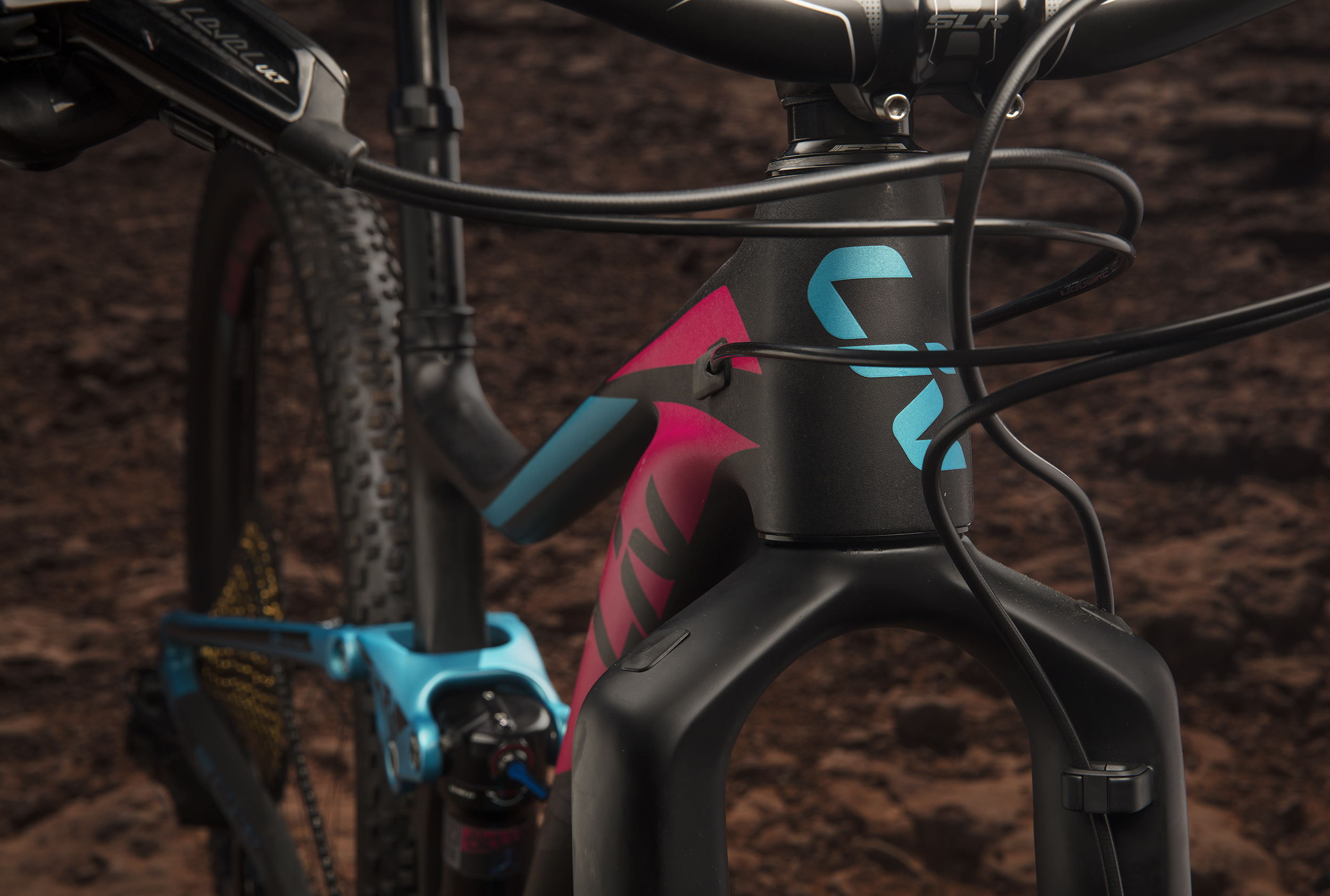
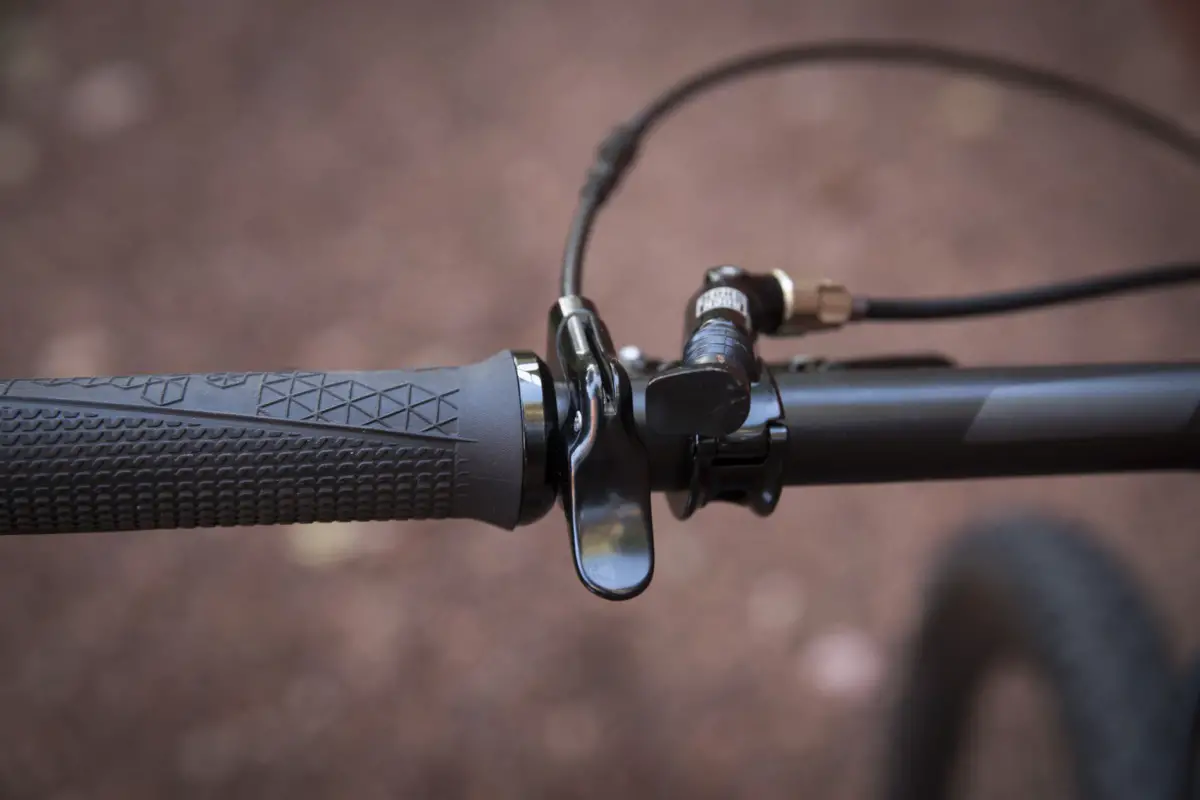
The Pique comes fitted with the same Giant Contact SL dropper that the Hail features, and, as with the Hail, I remain to be convinced that the cable actuation or slick thumb remote will work well in wet UK conditions. More of a concern to me though – with traditional UK conditions in mind – are the nooks and crannies around the pivot and bottom bracket, and the hollow rear chain stay on the drive side.
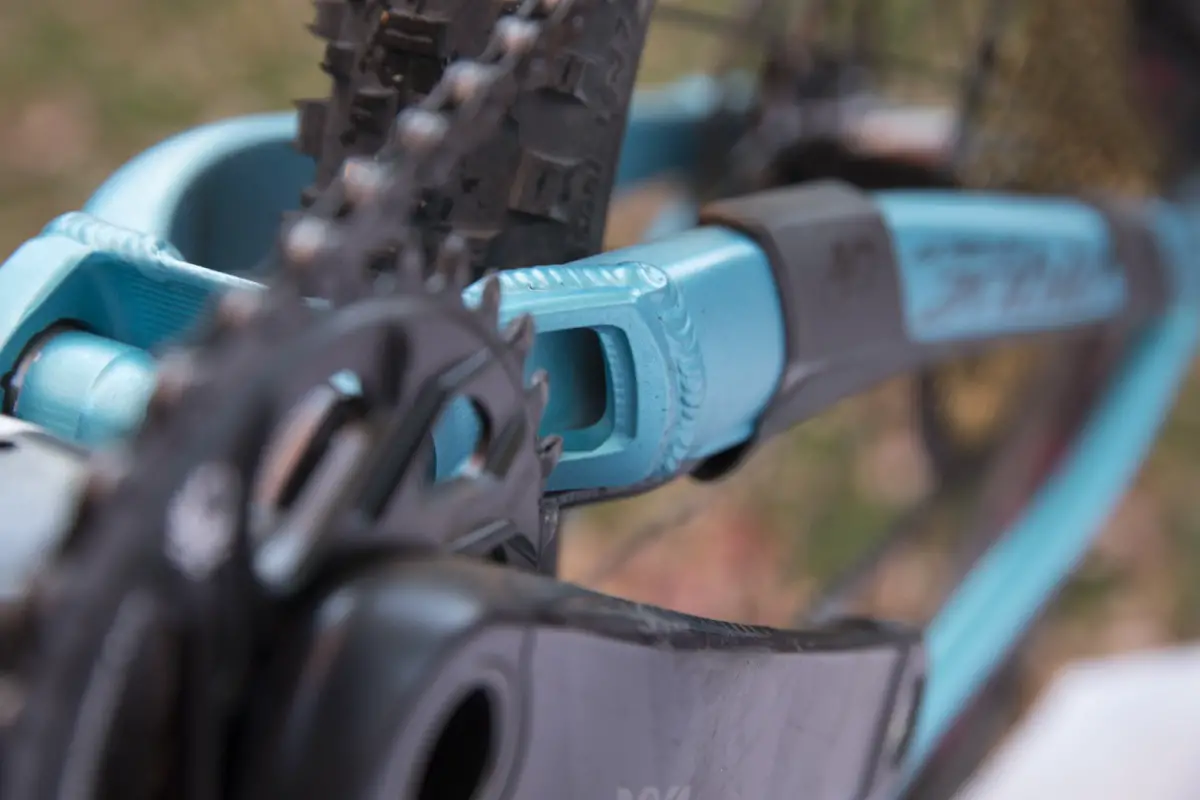
I’m not certain that the stay is hollow all the way along, but it’s certainly deep enough that I got the end of my little finger stuck in it while examining it. Being on the drive side, there’s no way to get in to it without removing the chain ring, and I’m convinced it is going to act as a mud, grit and stone collector. Cleaning that out is going to require some ingenuity and I expect that any mud riding owners are going to be looking for ingenious ways to cover it up. Oddly, the very similar shaped Hail chainstay has a blank sealed off end to it.
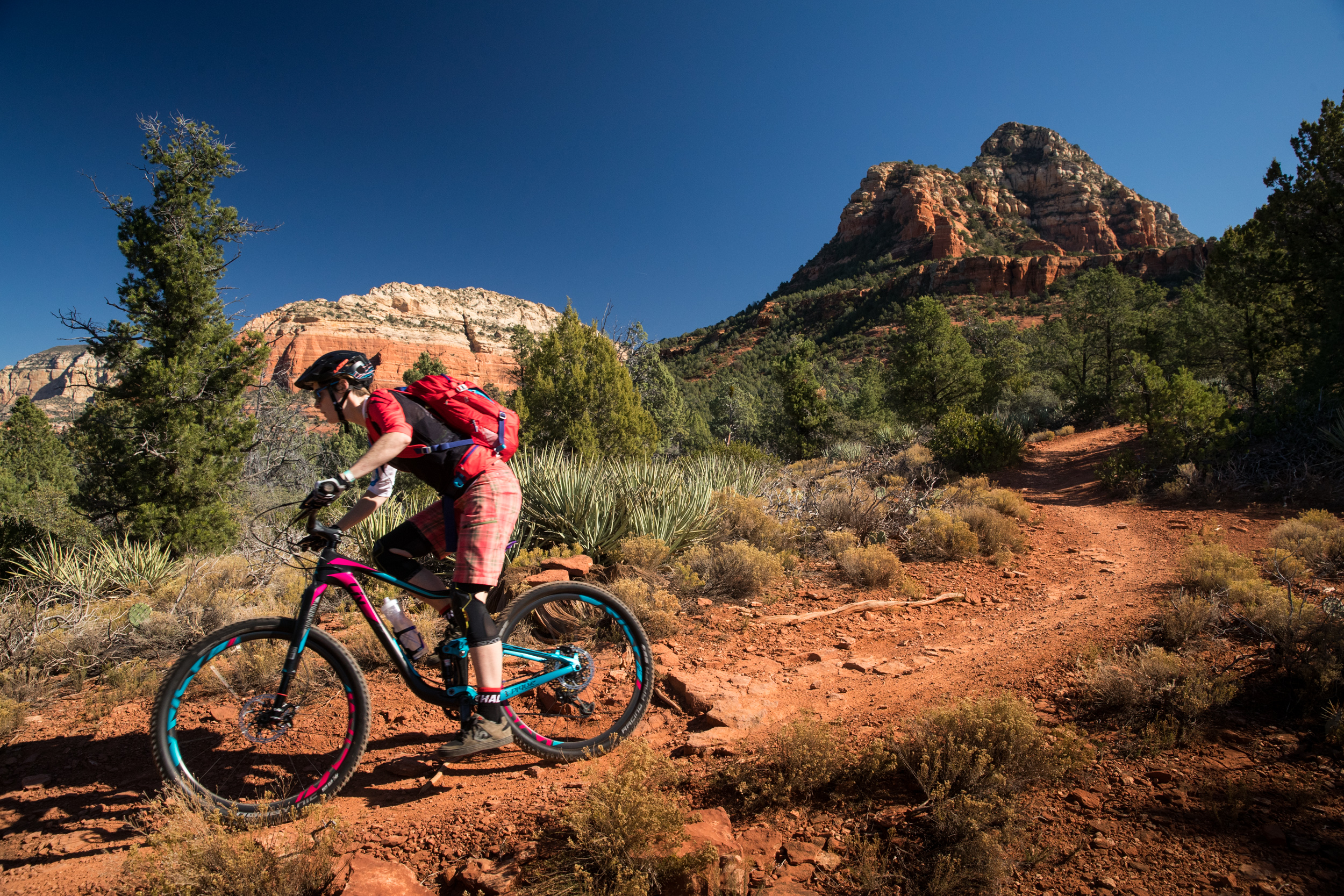
This is a very different bike to what I would normally choose to ride, and I was riding it in very different conditions to those I am used to. However, it’s perhaps a mark of its quality that I was able to confidently tackle such unfamiliar trails on such an unfamiliar stye of bike. It manages to be agile but stable, fast but planted, and stiff yet forgiving on technical terrain. And that’s not typically the case with an XC race bike. What more could you want?
There is clearly a market for this kind of high end XC bike for women – last year the Lust was the biggest selling mountain bike for Liv & Giant. When you consider just how many Trances, Anthems and Reigns must be out there, that’s a lot of fast pedalling women buying into the women’s specific philosophy. While for me the Hail is the more exciting of the two bikes, I don’t think it will be long before you see a Pique at your local XC race.
